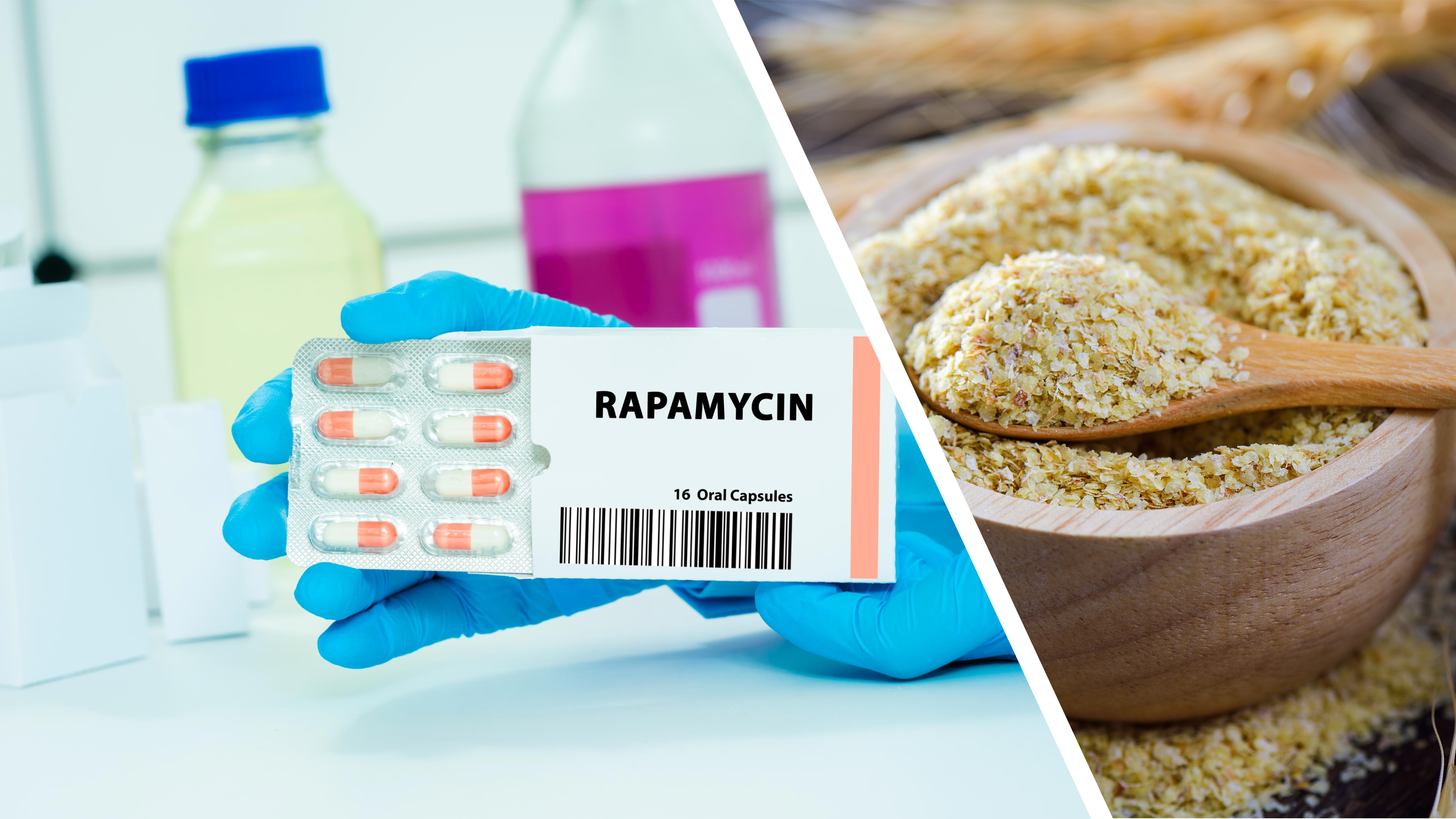
Rapamycin often steals the spotlight in longevity research, and for good reason. It’s a leading compound known to extend lifespan across species. Yet, quietly supporting rapamycin’s effects is another molecule: spermidine. While it doesn’t get the same attention, new research reveals that rapamycin may not work nearly as well without this naturally occurring polyamine. In this blog, we’ll explore a landmark study that not only reinforces rapamycin’s anti-aging power, but also highlights the essential, yet overlooked, role of spermidine in making that power possible.
New Paper Recap: Rapamycin + Trametinib for Lifespan Extension
A recent high-profile study revealed that the FDA-approved drugs rapamycin and trametinib can significantly extend lifespan in mice. Trametinib, originally developed for cancer, inhibits the Ras–MEK–ERK pathway, a signaling cascade that regulates cell growth and inflammation but becomes overactive with age. In mice, trametinib extended lifespan by up to 15.8% in males and 7.2% in females, primarily by reducing systemic inflammation, supporting brain health, and suppressing tumor formation.
But the real breakthrough came when trametinib was combined with rapamycin. Together, the duo increased lifespan by up to 34.9% in females and 27.4% in males, while also improving heart function, reducing age-related brain glucose uptake, and lowering inflammation throughout the body.
However, these benefits come with caveats: rapamycin can cause immunosuppression, mouth ulcers, and elevated blood lipids, while trametinib is often associated with rash, diarrhea, and fatigue.
How Rapamycin Promotes Longevity: The mTOR-Autophagy Connection
Rapamycin works by inhibiting mTORC1, a master regulator of cell growth, metabolism, and aging. This inhibition shifts cellular focus from growth to repair—activating autophagy, reducing inflammation, improving metabolic health, and lowering cancer risk.
Under normal conditions, mTORC1 suppresses autophagy. But when mTOR is downregulated (via fasting, caloric restriction, or rapamycin) this brake is lifted, and autophagy kicks in. This internal recycling process is one of the key drivers behind rapamycin’s anti-aging effects.
But how exactly does mTOR inhibition trigger autophagy? The answer: spermidine.
Rapamycin Needs Spermidine to Unlock Its Longevity Potential
We’ve previously highlighted a 2024 Nature Cell Biology paper that showed spermidine is essential for fasting-induced autophagy (see our blog about it here). Fasting increases spermidine levels, which in turn activates autophagy, the cellular cleanup process behind many of fasting’s health benefits.
However, this same paper revealed a lesser-known but crucial insight: rapamycin also relies on spermidine to work. The researchers found that an increase in endogenous spermidine is required for rapamycin to fully activate autophagy and extend lifespan.
Mechanistically, this occurs through a spermidine-dependent posttranslational modification called hypusination, which activates the translation factor EIF5A. EIF5A is required for the synthesis of pro-autophagic proteins such as TFEB. Without hypusinated EIF5A, neither fasting nor rapamycin can induce full autophagic flux or extend lifespan. Notably, mTOR functions as a negative regulator of both autophagy and polyamine biosynthesis under nutrient-rich conditions, further highlighting the reciprocal regulation between mTOR signaling and the polyamine pathway.
In simpler terms: no spermidine, no autophagy, and no anti-aging effect from rapamycin. In other words, for rapamycin to work its longevity magic, it needs spermidine!
Key Findings That Prove Polyamines Are Essential for Rapamycin's Effects
- Rapamycin induces autophagy by inhibiting mTORC1 in yeast, human cells, and C. elegans.
- In polyamine-deficient yeast (lacking the SPE1 gene and that cannot synthesize spermidine), this autophagy response is significantly impaired.
- Supplementing with spermidine restores autophagy in these cells.
- Rapamycin also increases endogenous levels of spermidine and spermine, indicating a feedback loop between mTOR inhibition and polyamine metabolism.
- Without polyamine synthesis, rapamycin fails to extend lifespan, but this effect can be rescued by spermidine supplementation.

This diagram illustrates the critical pathway through which rapamycin and fasting/caloric restriction promote improved healthspan and longevity. Both rapamycin and fasting inhibit mTOR, a key cellular regulator that normally suppresses spermidine production. By inhibiting mTOR, spermidine levels increase, which in turn activates the translation factor EIF5A via a spermidine-dependent modification (hypusination). EIF5A promotes the synthesis of pro-autophagic proteins, thereby stimulating autophagy—the cellular recycling process crucial for cellular repair and longevity. Enhanced autophagy leads to improved healthspan and lifespan extension. This pathway highlights spermidine’s essential role as a mediator of rapamycin’s anti-aging effects. From Hofer et al.
The Takeaway: Spermidine Is the Missing Link That Makes Rapamycin Work for Longevity
This research shines a spotlight on spermidine as a pivotal player in the aging process—crucial not only for mediating the benefits of fasting but also for enabling rapamycin’s full longevity potential. As we continue the search for safe and effective strategies to support healthy aging, targeting spermidine metabolism may prove to be a key lever for amplifying the effects of mTOR-based therapies. Far from a side note, spermidine is emerging as an essential piece of the longevity puzzle, one that deserves far more attention in the field of aging science.







